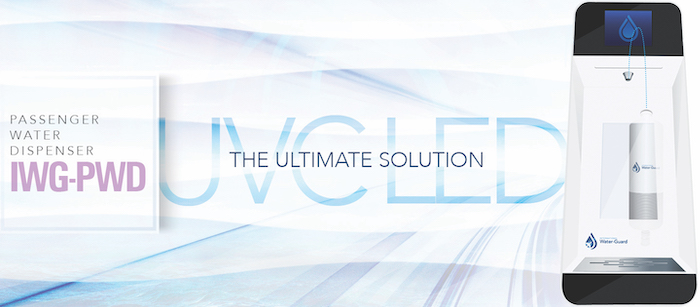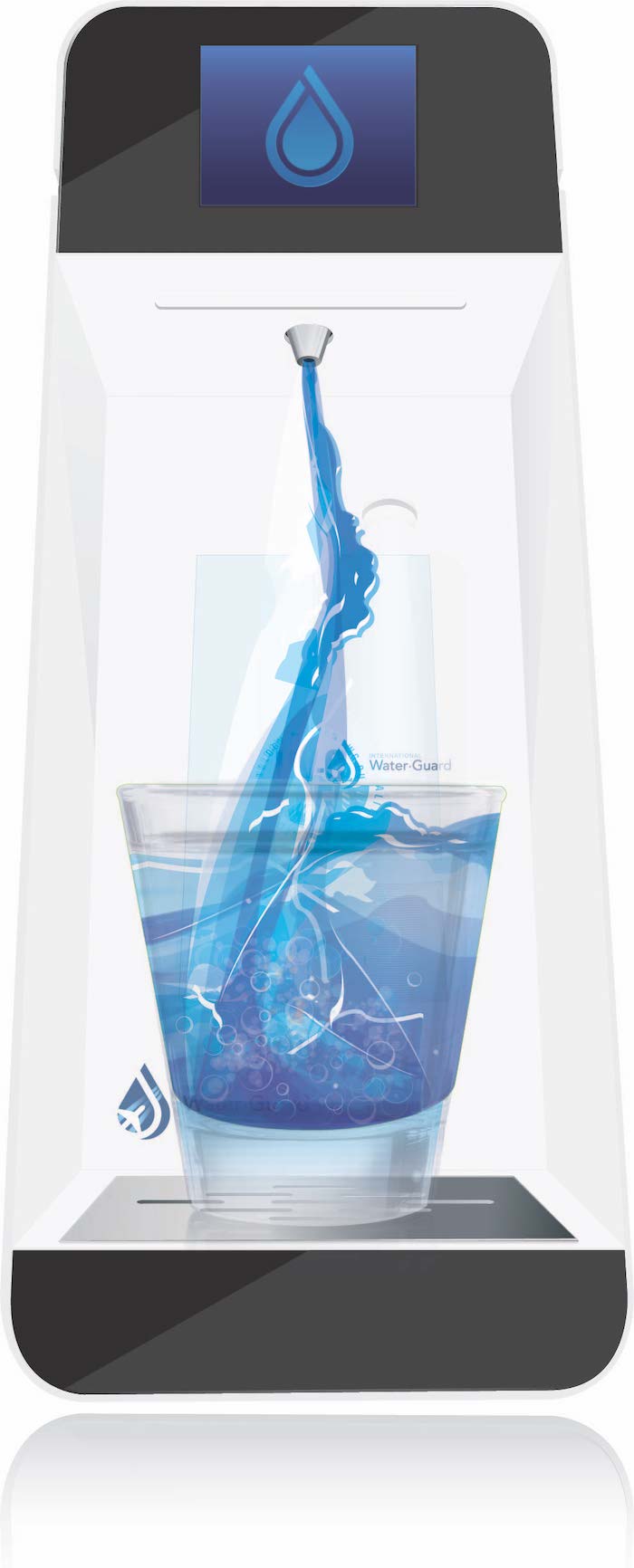How International Water-Guard keeps travelers hydrated and healthy
This is a special feature from PAX International's June 2020 Asia-Pacific digital edition.

International Water-Guard has been outfitting water disinfection units in business and VIP aircraft for more than 30 years. The company is now looking to find customers among scheduled airlines
For more than 30 years, International Water-Guard Industries has been supplying water disinfection units along with heaters, valves, faucets and other water related equipment to commercial, VVIP and head of state aircraft. Now, the British Columbia-based company is seeking to expand its capabilities and place a glass of cold, clear, and most importantly, clean water in the hands of airline passengers.
Using its ultraviolet light unit that is catching the attention of airlines and cleaning companies in a post-COVID-19 future, called the UVL1, teamed with its Passenger Water Dispenser (PWD), International Water-Guard can produce pure clean water, without the use of chemicals, to every passenger.
This summer sees the company moving to carve out a niche in the commercial aviation market. In this issue’s Industry Q and A, David Pohl, Director Strategic Development,
International Water-Guard Industries Inc. answers a few questions from PAX International about the PWD and what can be done to get airlines interested in quenching passenger thirst while reducing weight and single-use plastics.
PAX International: Are there any type certificates or regulatory requirements that need to be met for the PWD? If so, what are they?
David Pohl: The PWD will be TSO certified as a galley component. The PWD will be NSF61 Compliant and tested to NSF 55 Class A for UV disinfection. The PWD is uniquely designed to fit into specialty interior monuments such as passenger wellness or refreshment zones on long-haul flights. The PWD can also be fitted onto galleys in locations that are separate from the flight crew activity areas. PWD derivatives are planned for galley inserts
PAX: Are you looking to have the product listed in Boeing and Airbus catalogs? Have they been approached?
Pohl: Yes, we have discussed the PWD with both Airbus and Boeing. While there is some interest in having this as an offering, it would be the galley manufacturers that will drive the demand if they want to differentiate their offering. Later, after the PWD finds its way onto several airline fleets, we fully expect OEM’s to one day add the PWD to their catalogs. Remember, after O’Hare installed the first water filling station in 2011, soon others followed and now most of the major airports have stations.
PAX: How many PWDs would be optimal for a standard widebody?
Pohl: The answer depends on the vision of the airline. All airlines that operate wide bodies have design teams at work trying to define what the cabin layout of the future will look like and especially those with the longest flight legs. Some of the ideas include wellness centers and refreshment areas that are accessible to passengers to get up from their seats and spend time in. All of these areas are perfect candidates for a PWD. If they are also committed to eliminating plastic bottles, the need for PWDs increases.
PAX: To keep the product filled and maintained, do caterers play a role? What entity at the airport or catering outlet would ensure the units are filled and maintained?
Pohl: The PWD is integrated into the aircraft water system and it is designed to be operated by the passenger. Cabin crew or caterer involvement is not required. The maintenance of the PWD is relatively simple with an occasion filter cartridge change once every three to four months and an even more occasional UV-LED device replacement once every five to seven years depending on usage.
 Galleys and common areas around aircraft are prime places for the Personal Water Dispenser (PWD)
Galleys and common areas around aircraft are prime places for the Personal Water Dispenser (PWD)
PAX: Airlines are generally leery to be first customers and early adopters. What sort of feedback and comments have you received from potential airline customers?
Pohl: The airlines are cautious, but they also know how to work with the OEMs to get what they believe their passengers need. This need is not going away. One day soon, the first agreement for introducing a PWD onto an aircraft will be made by an innovator airline with an OEM. And like you suggest, the early adopters will follow and add water refill stations to their aircraft too.
PAX: Potable water quality is entirely dependent on the source. Would this device be able to work in any part of the world?
Pohl: Water quality is dependent on the source, but it is also affected by the process to transport the water from the source to the aircraft water tank. Most airlines have a team that closely monitors the entire process to protect the quality of the water uploaded into their aircraft. The last step in the chain is the cleanliness of the aircraft’s potable water tank and water distribution system, and, airlines have to comply with regional water quality regulations. If there is a failed water sample, an aircraft can be taken out of service for the water system to be cleaned. The PWD is a point of use component that filters and disinfects water. If there is an escape in the water source or transport process or an unclean water system onboard an aircraft that allows contaminated water to enter the PWD, the PWD will filter the sediment, will change the foul taste and eliminate the odor of the water and will kill the common waterborne pathogens or biofilms before the water enters a passenger’s water bottle.

